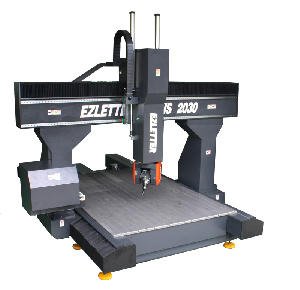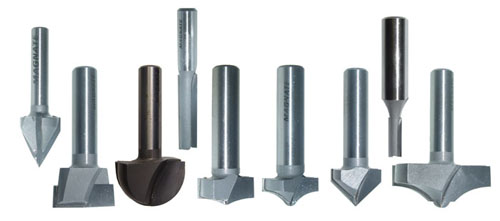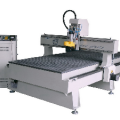 Modern machine tool technology has allowed for many different types of CNC routers to come about. Each piece of equipment has it’s practical use, but knowing which is best for your needs can be difficult.
Modern machine tool technology has allowed for many different types of CNC routers to come about. Each piece of equipment has it’s practical use, but knowing which is best for your needs can be difficult.
Below, we go into detail regarding all types of router and accessories. Read along to learn what type of machinery will best fit your machining needs.
Types of CNC Routers
Industrial CNC routers make up approximately 80% of all the CNC routers that are currently in circulation, as many large companies that specialize in woodworking own several of these machines, to meet the deadlines and mass productions of their product (signs, doors and furniture). They are costly, but are built to endure long hours of continuous operation, which justifies the price for businesses.
Mid-range routers are perfect for businesses that produce much less product (such as sign makers and manufacturers of guitars/musical instruments), and also for the enthusiast/hobbyist. This machine is a grade lower than the industrial CNC router, and although they deliver the same quality of precision, the machine is lighter and much smaller than its “big brother”.
Multi Axis CNC Routers are effective when three dimensional cuts are necessary. Four and 5 axis CNC routers provide more variety and flexibility to the operator, and produce a true 3D cut. These types of CNC routers are usually found in artistic industries, and when quick prototyping is needed.
 It is not very difficult to operate a 5 axis CNC router. The planned finished product is plugged into a computer (usually forming a 3-D visual model). This completed visual model is then communicated (transferred) to the CNC router, and the carving begins according to the specific instructions that had been programmed into the computer by the operator.
It is not very difficult to operate a 5 axis CNC router. The planned finished product is plugged into a computer (usually forming a 3-D visual model). This completed visual model is then communicated (transferred) to the CNC router, and the carving begins according to the specific instructions that had been programmed into the computer by the operator.
Primarily found in medium to large size factories that focus on wood production, a standard 5 axis CNC router is a very large piece of equipment that costs tens of thousands of dollars (U.S. currency), which virtually makes it impossible for this to be a machine for a hobbyist, who works out of their garage or home-based workshop.
On the positive side, thanks to their large size, 5 axis cnc routers have the ability to carve a material/workpiece that is several feet higher and wider than the machine.
Parts of a Standard CNC Router
Motor (either powered by electric or air). The base plate extends off the motor, and the shaft is found extended from the motor and through the base plate. One end of the shaft, the collet, holds the bit (cutting tool) in place.
CNC Router Table
A computerized numerical control (CNC) router table consists of the combination of a moveable frame, flat work area, and router that is operated via a computer.
CNC routers are used to trim, cut and shape material, such as soft metal, wood and types of plastics, in addition to having the ability to etch three-dimensional designs onto the surface material.
A CNC router table can move back and forth on the X-axis or be stationary. Tables that are categorized as stationary, usually have a gantry (motorized frame) that is mounted under the base that freely moves along the X-axis.
Wood is the most common type of work piece used, but polyurethane and plastic are also common types of material that are found on a CNC router table.

CNC Router Bits
Router bits are classified as profile, helical and fluted, and range in diameter from .2 inches to .5 inches.
Bits rotate at very high speeds (up to 30,000 spins per minute), and depending on the designated cuts, many bit shapes are available (including spiral, round and long bits with a knife type head).
